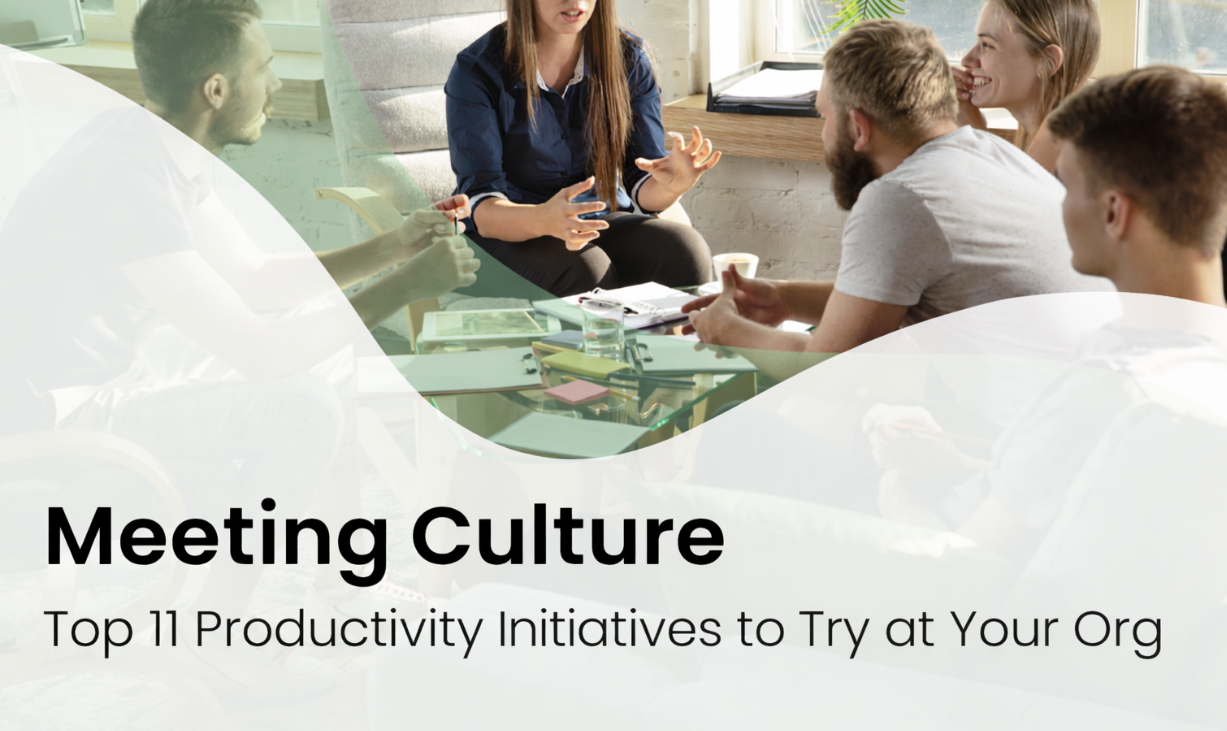At some point or another, we’ve all been convinced the universe is out to get us – stuck in traffic before an important meeting, working overtime to catch up once again, or passed over for a promotion. It's easy to fall into the trap of scarcity thinking, believing there's not enough time, money, or good fortune to go around.
Unfortunately, feelings of scarcity, limitation, and fear, are, perhaps, our biggest barriers to our professional and personal growth.
So why do we view the world through a lens of scarcity? It's actually something we need to stop defaulting to by instinct. What if we could cultivate a mindset that sees possibilities instead of limitations, that embraces collaboration over competition? In other words, what if we had an abundance mindset?
In this article, we explore the science and psychology behind the abundance mindset shift and share 12 tips that can change your life.
How to develop an abundance mindset in 12 steps
Jump ahead to these top 12 steps:
- Practice gratitude
- Practice generosity
- Shift your thinking
- Focus on what you have
- Focus on what’s going right
- Master your attention & intention
- Redefine success & value
- Celebrate others’ success
- Savor the good times
- Surround yourself with abundance
- Embrace win-win thinking
- Ditch your limiting beliefs
What is an abundance mindset?
Are you a glass-half-empty or half-full kind of person? A deceivingly simple question for sure, but your answer reveals a lot about your mindset. And, if you answer half-full, chances are, you have yourself an abundance mindset.
An abundance mindset is a perspective that feels there is plenty out there for everyone – enough resources, enough chances to succeed. That life isn't some zero-sum game (where every winner requires there to be a loser). And when you believe that, it changes everything. You start feeling more optimistic, you're more willing to share and collaborate, and you're less afraid of missing out.
Of course, having a mindset of abundance doesn't mean denying challenges or pretending everything's rosy; it's about fundamentally believing that opportunities and resources are plentiful in all areas of life. With an abundance mindset, everything becomes an ever-expanding smorgasbord of possibilities. (And who doesn't love a good smorgasbord?)
When it comes to productivity, this isn't just some feel-good stuff. When you believe opportunities are abundant, you're more likely to take risks, to innovate, to reach out, and build networks – all of which are huge for your overall well-being. You're less likely to get bogged down by setbacks, because you know there's always another path to explore.
Signs of an abundance mindset
Here are some telltale signs that you have an abundance mindset:
- You're a natural cheerleader. When your friends or colleagues succeed, you're genuinely thrilled for them. No hint of envy, just pure celebration.
- You're a giver, not a hoarder. You share your knowledge, your time, and even your resources freely. You understand that generosity breeds abundance, not scarcity.
- You see possibilities, not limitations. When faced with a challenge, you're more likely to ask, "How can I make this work?" than "Why is this happening to me?"
- You're not afraid to take risks. You understand that failure is just feedback, and there are always more opportunities around the corner.
- You're grateful for what you have. You appreciate the good in your life, big and small, and that gratitude fuels your sense of abundance.
- You're a lifelong learner. You're always looking for ways to grow and expand your skills, confident there's always more to discover.
- You focus on collaboration, not competition. You believe that working together creates more opportunities for everyone to succeed.
- You're optimistic about the future. You see the world as full of potential, and you're excited to see what the future holds.
If these sound like you, congratulations! You're already well on your way to living a life of abundance. If not, don't worry – it's a mindset that can be developed and cultivated.
What is a scarcity mindset?
What if you're not quite relating to this abundance mindset mentality? Don't worry – an abundance mindset isn't just something you're born with. It can be developed and cultivated.
However, if you don't have an abundant mindset (yet!), you likely have a scarcity mindset. But in all fairness, this is the mindset that actually comes naturally to most of us. It's not often someone is just inherently predisposed to abundance (and we'll talk more about why in the next section).
A scarcity mindset is a perspective that views the world through a lens of lack and limitation. People with this mindset tend to believe that there's never enough to go around, whether it's money, opportunities, or whatever other resources are in question. They often feel that for them to win, someone else must lose. This outlook can (and does) lead to constant anxiety about the future, a reluctance to share or collaborate, and a tendency to focus more on potential losses than gains.
It even reduces our empathy towards other people. Ultimately, a scarcity mindset can be self-limiting for our personal development, causing people to miss opportunities and struggle with feelings of inadequacy and fear.
Signs of a scarcity mindset
Here are some telltale signs that a scarcity mindset might be holding you back:
- You're always comparing yourself to others. You're constantly sizing yourself up against others, feeling a pang of envy with every success they achieve.
- You're a hoarder, not a helper. Sharing feels threatening, whether it's knowledge, resources, or even a simple compliment. There's just never enough to go around, right?
- You see roadblocks, not possibilities. Every challenge feels insurmountable, every setback a confirmation that the world is working against you.
- You play it safe. Taking risks feels terrifying because failure means losing something precious, something you might never get back.
- You focus on what's missing. Your attention is constantly drawn to what you don't have, leaving little room to appreciate the good things in your life.
- You believe your potential is limited. Growth feels like an uphill battle, and you're quick to dismiss new opportunities as "not for you."
- You're a lone wolf. Collaboration feels like a threat, and you'd rather go it alone than risk someone else taking the spotlight.
- You're a worrywart. The future looms large, filled with potential pitfalls and missed chances. It's hard to relax when you're constantly on edge.
The roots of the scarcity mindset
So, if a scarcity mindset is holding us back, why do most of us seem to naturally think that way? As if that is just our default programming.
The most significant root of the scarcity mentality is our evolutionary history as human beings. Believe it or not, despite living in a vastly different and advanced world, our brains haven't really changed much since the Stone Age. And, our ancestors existed in an environment where resources were genuinely scarce. Food, shelter, and even mates were often in short supply.
A scarcity mindset helped those ancestors to survive, and, as Charles Darwin has taught us, those with the traits (or mindsets, in this case,) that were best fit for survival, well, they survive and are passed down. Rinse and repeat and we're left with a whole lot of modern humans with scarcity mindsets.
And even though we’re now living in a modern age of abundance, with a relentless focus on competition, comparison, and consumerism, this only exacerbates these innate tendencies. From a young age, we're bombarded with messages that there's not enough to go around – not enough success, not enough beauty, not enough stuff. Social media paints a picture of a world where everyone else is thriving, and that we're being left behind.
But it is possible to change our brains. Understanding the origins of scarcity is the first step towards breaking free from its grip. Now, with all that context out of the way, let's jump into how to do just that and cultivate an abundance mentality.
How to cultivate an abundance mindset in 12 steps
It's time to roll up our sleeves and get practical. Let's become glass-half-full people.
Here are 12 steps you can take to ditch scarcity for abundance:
1. Practice gratitude
The first stone in the foundation of the abundance mindset is gratitude. That's right – the simple act of recognizing and appreciating the good in your life, both big and small. When you focus on what you have (rather than what you lack) you tell your brain to shift from scarcity to abundance. As simple as it may sound, research has found that practicing gratitude leaves you with a lasting feeling of optimism about your life – and even reduces visits to the doctor!
This is so simple, how do you even make the transition? You can start by keeping a gratitude journal, where every day you list out all the things you're grateful for. Reflect on daily positive affirmations like, "What am I grateful for today?" or "Who has made a positive impact on my life?"
Meditate on things you appreciate – if you don't know where to begin Elaine Smookler recommends starting with your senses. That is, start with your breath, then move on to the sights, sounds, scents, etc. immediately around you that you're feeling grateful for (the warmth of my coffee cup, the smell of the beans). From there, the snowball will start rolling and you'll find yourself with plenty to be grateful for.
2. Practice generosity
With that said, gratitude alone isn't enough to cultivate a mindset of abundance. You'll need to put that abundance into practice in the form of generosity. An abundant person understands that giving doesn't deplete your resources – it expands them. Sharing your time, talents, or possessions creates a ripple effect of positivity. In doing so, you'll feel more connected to those around you, which, in turn, reinforces the belief that there's enough for everyone.
Being generous activates what social psychologists call "reciprocity." That is, people feel compelled to return favors or kindnesses, creating a mutual exchange. So being generous will open doors to unexpected opportunities and blessings. Being an abundant person doesn’t mean you need to hoard what you have.
Embrace generosity through acts of kindness, both big and small. Volunteer your time, donate to charity, offer a helping hand, share your knowledge, or simply give a heartfelt compliment.
3. Shift your thinking
Of course, you can start to engage these abundance mindset behaviors (be more generous, be more grateful), but you can't expect to stick with them for long if you don't shift your thinking as well.
Creating an abundant life requires a conscious rewiring of your thoughts. Don't be afraid to challenge those ingrained scarcity-based beliefs and replace them with empowering abundant perspectives. Still, this shift won't happen overnight, but with consistent practice, you can reprogram your mental software and create a reality of limitless possibilities.
For example, reframe some common scarcity-tinged thoughts like this:
And don't just take our word for it. Research on neuroplasticity indicates that consciously negative beliefs and replacing them with positive, growth-oriented thoughts can lead to lasting changes in your growth mindset, motivation, achievement, and brain activity.
4. Focus on what you have
This tip goes hand in hand with generosity and gratitude. One of the consequences of a scarcity mindset is focusing too much on what you don't have. You might be fixating on what's missing. But true abundance lies in appreciating what you already have. Shifting your focus towards your existing gifts and resources cultivates gratitude, which again, is the cornerstone of the abundance mindset. Chances are, the more you focus on what you have, the more you'll realize what you do actually have.
And remember, the things we take for granted are also the things that someone else is wanting for. Create a vision board representing your current and desired abundance. Practice daily appreciation, celebrate your wins, and focus on your strengths. Abundance can be found in all aspects of life. By appreciating what you have, you lay the groundwork for attracting even more.
5. Focus on what's going right
Similarly, you have to stop putting so much of your energy into what's going wrong. Shift your focus on what's going right. As simple as it sounds, this isn't always the easiest thing to do. Our brains are not naturally wired to process our emotions equally. In fact, the negatives tend to get much more weight, which is known as the negativity bias.
So, actively seek out and celebrate those wins, big and small, to counterbalance the natural negativity bias that often clouds our perception. You can cultivate this habit by keeping a "wins" journal, sharing your successes with others, and practicing self-appreciation. Reflect on past achievements and express gratitude for the present moment's simple joys.
6. Master your attention & intention
Ultimately, cultivating an abundance mindset comes down to two things: attention and intention. Where you focus your attention shapes your perception and experiences, while your intentions steer your actions and outcomes. Mastering these forces allows you to consciously create a life filled with possibilities.
Practicing mindfulness can do wonders in observing your thoughts, which can, over time, help you redirect any scarcity-based thinking. Intentionally choose to focus on the positive, practice gratitude, and visualize your desired outcomes. Set clear goals, use affirmations, and take inspired action towards your goals.
7. Redefine success & value
Of course, as we mentioned, the roots of the scarcity mindset are based on our evolutionary history. However, that doesn't also mean it's bolstered by societal expectations. Cultivating an abundance mindset also means redefining success and value.
There's a very clear difference between what is hard to get and what is valuable. An expensive watch, a luxury sports car, and a penthouse apartment are all things that are hard to get. But just because something is hard to get doesn't mean it’s valuable. It's easy to imagine that someone could do all the heavy lifting and get all these hard-to-acquire things only to not feel any more fulfilled. And the reason is, these desires are rooted in the scarcity mindset.
An abundance mindset will naturally lead you towards genuinely valuable things. Abundance resides not in what you have, but in who you are and the impact you make. It's about living a life aligned with your values, fueled by your passions, and rich in meaningful connections. Ask yourself what truly matters, what brings you joy, and what impact you want to make. Set goals that align with your values and passions, even if they don't lead to traditional markers of success.
8. Celebrate others' success
With a scarcity mindset, seeing someone else succeed can trigger feelings of envy and inadequacy. But abundant thinking knows that there's plenty to go around. Seeing a colleague, a friend, or a family member do well isn't taking anything away from you. Your opportunities are still out there regardless (whether in the same company or not). By genuinely supporting and encouraging others, you strengthen relationships, reinforce your own belief in possibilities, and inspire your own growth.
So try catching your own envy triggers and reframing your perspective. See others' success as inspiration, not a threat. Celebrate publicly, focus on collaboration, and practice self-compassion when envy inevitably arises. At the end of the day, celebrating others doesn't diminish your own achievements. It creates a positive environment that will support your growth and attract even more abundance into your life.
9. Savor the good times
Many of us are busy in our daily lives. No one can really blame you for sometimes rushing through life's good times without truly appreciating them. It's not always easy to stop and smell the roses when you already have so much on your plate. But happiness is a compass, not a destination. Fully experiencing and appreciating positive moments creates lasting memories, deepens connections, and cultivates a greater sense of joy and fulfillment.
Create rituals to mark special occasions and celebrate everyday moments. Whether it's mindful eating, listening, walking, or simply breathing, these practices anchor you in the present, allowing you to truly experience the richness and abundance of life. Life isn't some big grand event – it's a collection of little moments that accumulate over time.
10. Surround yourself with abundance
"You are the company you keep," says the ancient truism. The people you surround yourself with can have a profound impact on your mindset. After all, if you're constantly inundated with another's negativity and scarcity, how can you be expected to cultivate abundance?
But, on the flip side, surrounding yourself with positive, abundant-minded individuals acts as a turbo boost for your own growth. You'll find that their energy, optimism, and belief in possibilities are genuinely infectious and will naturally uplift and expand your own perspective.
So actively seek out your abundance tribe. Set boundaries with energy vampires and cultivate relationships with those who embody positivity and support. Join communities of like-minded individuals and nurture existing relationships with those who uplift you. You choose your circle, and by surrounding yourself with abundance, you create fertile ground for your own growth.
11. Embrace win-win thinking
The scarcity mindset traps us in a zero-sum game, where one person's win is another's loss. But an abundance mindset embraces win-win thinking. I know we probably sound like a broken record at this point, but the point is worth repeating – there's plenty of abundance to go around.
Seeing others in your circle succeed can be (and is) a win-win situation. As the saying goes, "a rising tide lifts all boats." Challenging zero-sum beliefs opens doors to mutual benefit and collective growth. (For those who’ve read it, you’ll know that win-win thinking also happens to be, according to Stephen Covey in his best-selling book, one of The 7 Habits of Highly Effective People.)
So question assumptions of scarcity and seek common ground. Practice active listening, communicate openly, and celebrate collective success. Whether in negotiations, team projects, mentoring, or personal relationships, strive for solutions that benefit all involved. By embracing win-win thinking, you shift from competition to collaboration, which will help you internalize that your success is intertwined with the success of others.
12. Ditch your limiting beliefs
Finally, the last remnants of the scarcity mindset lie in the scarcity of your own capabilities. Many of us may suffer from what is known as "limiting beliefs," those thoughts or attitudes that restrict us in some way or another because of what we "don't" have or "can't" do. Remember that same negativity bias also applies to our own self. We are all capable of much more than we might think.
But, with limiting beliefs looming over you (our deeply ingrained thoughts, often rooted from past experiences or societal conditioning), you're creating a self-fulfilling prophecy of scarcity and lack.
But, self-fulfilling prophecies work both ways. A new, better position opened up at your company? Instead of thinking how unqualified you are, how bad of a job you'd probably do, or how you'd never get it in the first place, flip the script. You are qualified; you will do a great job; you totally could get the job.
Start paying more attention to your inner dialogue, and identify those negative thoughts that limit your potential. Question their validity and replace them with empowering alternatives. Seek evidence that disproves these beliefs and practice self-compassion throughout the process. Use affirmations like "I am abundant" and "I am worthy of success" to reinforce positive self-talk and cultivate empowering beliefs. Your beliefs shape your reality.
From scarcity to abundance ✨
You now have the tools to change your thinking! But cultivating an abundance mindset isn't a one-and-done deal. It's like tending a garden – it needs constant care, watering, and a bit of sunshine. Be patient with yourself. Some days, those old scarcity weeds might try to creep back in. That's okay. Just gently pluck them out and keep planting those seeds of gratitude, generosity, and possibility.
Celebrate every little victory, every shift in perspective, every moment where you catch yourself choosing abundance over lack. And most importantly, trust in yourself. You have the power to create a life overflowing with joy, fulfillment, and, yes, abundance.



































